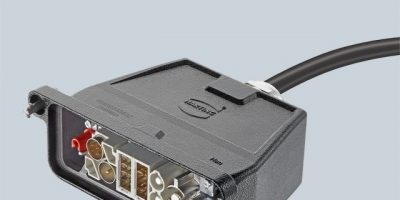Gigabit module adds digitisation to rail vehicles
Believed to be the first modular industrial connector designed to meet the rail industry’s growing need for high-speed communication based on the Cat.7A cabling standard on-board rail vehicles, the Han Gigabit module has been released by Harting.
The digitisation of the railway sector has accelerated, reports Harting, as cable-based communication in rail vehicles grows in response to Wi-Fi usage, developments in passenger information systems, and the use of additional sensors and assemblies for electronic monitoring and control, with a growing volume of data.
Today’s trains and rail vehicles need powerful networks and interfaces that fit the specific requirements of the rail market. One key requirement is high transmission speed meaning that railway operators have decided on Cat.7A as a future standard, allowing transmission in the frequency range up to 1 GHz.
The Han Gigabit module is the first matching modular connector to meet this requirement, offering signal integrity that is significantly better than the previous Cat.6A standard. Shielding against interference also improves, as Cat.7A cables consist of four individually screened wire pairs which are surrounded by another screen braid.
The Han Gigabit module enables Cat. 7A transmission in the train carriage area and offers advantages for interference resistance and frequency range. The interface is shock- and vibration- resistant according to DIN EN 61373, Category II, which makes it suitable for extreme loads in the railway environment. The module is also future-proofed, allowing the installation of an Ethernet backbone for future facilities, upgrades and conversion of rail vehicles.
Harting also supports flexible data exchange on the train with unmanaged switches and patch cables. In a chain comprised of sensors, antennae, RFID readers and Harting’s MICA industrial computer platform – the latter serving as an edge computer for filtering, aggregating and compressing the sensor data – ambient data can be recorded wirelessly in the periphery and digitally processed for control purposes. The Mica platform translates the sensor data from the RFID reader and makes it available to the bus system in both filtered form and reduced to the required extent.
Harting’s open hardware and software platform promotes digitisation; here, the Mica acts as an intermediary between the data protocols of manufacturers of independent systems.




